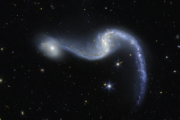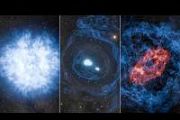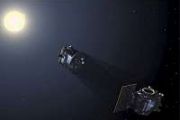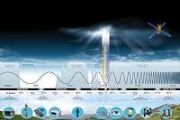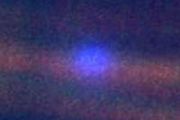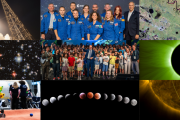
Copernical Team
Connecting science from sea to space

Doing science at sea is no easy endeavour. Add racing across oceans and heading to a UN conference , and the complexity multiplies. This summer, thanks to satellite connectivity from Eutelsat’s low Earth orbit constellation, OneWeb and the support from the European Space Agency (ESA), and the UK Space Agency, the Kaïros’ We Explore catamaran sailed smarter, safer, and more sustainably on its journey to the UN Ocean Conference in Nice.
Virgin Atlantic to Upgrade 787 Fleet with Boeing High-Speed Wi-Fi System
 Boeing and Virgin Atlantic will equip the airline's fleet of Boeing 787 Dreamliners with high-speed, streaming-quality Wi-Fi under a new connectivity modification agreement announced during MRO Europe on October 15. The upgrade will enable passengers to enjoy a more seamless internet experience while in flight.
Virgin Atlantic's Chief Customer and Operating Officer Corneel Koster said the
Boeing and Virgin Atlantic will equip the airline's fleet of Boeing 787 Dreamliners with high-speed, streaming-quality Wi-Fi under a new connectivity modification agreement announced during MRO Europe on October 15. The upgrade will enable passengers to enjoy a more seamless internet experience while in flight.
Virgin Atlantic's Chief Customer and Operating Officer Corneel Koster said the United launches first mainline flight with Starlink WiFi onboard
 United Airlines is set to make aviation history with the first Starlink-equipped mainline flight scheduled for takeoff tomorrow morning. United flight 2940 will depart from Newark/New York to Houston at 8 a.m. ET, marking the first time a major U.S. carrier has provided Starlink WiFi on a mainline aircraft, with connectivity available for both personal devices and seatback entertainment systems.
United Airlines is set to make aviation history with the first Starlink-equipped mainline flight scheduled for takeoff tomorrow morning. United flight 2940 will depart from Newark/New York to Houston at 8 a.m. ET, marking the first time a major U.S. carrier has provided Starlink WiFi on a mainline aircraft, with connectivity available for both personal devices and seatback entertainment systems. Stopping slime on Earth and in space
 How do you prevent biofilms - large communities of bacteria like the slime on your teeth before you brush - from growing in water systems in space and on Earth?
A multi-university research team led by Arizona State University Regents Professor Paul Westerhoff is investigating ultraviolet light as a cost-effective, safer alternative to disinfecting chemicals to prevent biofilm growth on sur
How do you prevent biofilms - large communities of bacteria like the slime on your teeth before you brush - from growing in water systems in space and on Earth?
A multi-university research team led by Arizona State University Regents Professor Paul Westerhoff is investigating ultraviolet light as a cost-effective, safer alternative to disinfecting chemicals to prevent biofilm growth on sur Space Ocean and Enduralock to unify orbital docking standards for in-space fluid and power transfer
 Space Ocean Corp has signed a Letter of Intent (LOI) with Enduralock to integrate the company's OneLink system as a standardized docking interface for in-orbit fluid, power, and data transfer. The collaboration aims to establish a common connection framework across Space Ocean's future logistics and servicing platforms.
Under the agreement, Space Ocean plans to adopt Enduralock's passive m
Space Ocean Corp has signed a Letter of Intent (LOI) with Enduralock to integrate the company's OneLink system as a standardized docking interface for in-orbit fluid, power, and data transfer. The collaboration aims to establish a common connection framework across Space Ocean's future logistics and servicing platforms.
Under the agreement, Space Ocean plans to adopt Enduralock's passive m SATLINE boosts European satellite reach with new UK data center
 SATLINE has launched a new United Kingdom data center to expand its satellite coverage and enhance broadcast, IPTV, and OTT performance across Europe. The new facility, equipped with two high-performance downlink antennas, enables faster and more resilient connectivity for clients in the satellite communications sector.
The center's core function is to convert satellite RF signals into IP
SATLINE has launched a new United Kingdom data center to expand its satellite coverage and enhance broadcast, IPTV, and OTT performance across Europe. The new facility, equipped with two high-performance downlink antennas, enables faster and more resilient connectivity for clients in the satellite communications sector.
The center's core function is to convert satellite RF signals into IP Gilat Secures $42 Million in Multi-Orbit Platform Orders as In-Flight Connectivity Surges
 Gilat Satellite Networks has received $42 million in new orders from a major global satellite operator for its SkyEdge IV multi-orbit platform. The systems will be delivered over the next year, expanding Gilat's role in powering broadband connectivity across GEO, MEO, and LEO networks.
The company said the orders underscore the growing demand for flexible ground infrastructure to support n
Gilat Satellite Networks has received $42 million in new orders from a major global satellite operator for its SkyEdge IV multi-orbit platform. The systems will be delivered over the next year, expanding Gilat's role in powering broadband connectivity across GEO, MEO, and LEO networks.
The company said the orders underscore the growing demand for flexible ground infrastructure to support n Geologists discover the first evidence of 4.5-billion-year-old "proto Earth"
 Scientists at MIT and elsewhere have discovered extremely rare remnants of "proto Earth," which formed about 4.5 billion years ago, before a colossal collision irreversibly altered the primitive planet's composition and produced the Earth as we know today. Their findings, reported in the journal Nature Geosciences, will help scientists piece together the primordial starting ingredients that forg
Scientists at MIT and elsewhere have discovered extremely rare remnants of "proto Earth," which formed about 4.5 billion years ago, before a colossal collision irreversibly altered the primitive planet's composition and produced the Earth as we know today. Their findings, reported in the journal Nature Geosciences, will help scientists piece together the primordial starting ingredients that forg ESA taps NanoAvionics to build large cubesat for EU IOD IOV mission
 ESA, acting through ESTEC, has chosen Lithuania-based Kongsberg NanoAvionics to deliver a large cubesat platform for the European Union's in-orbit demonstration and validation program. Under the IHE1-5 Cubesat project, the company will provide a 12-16U spacecraft to host multiple European payloads for flight testing.
NanoAvionics will handle end-to-end delivery, including spacecraft design
ESA, acting through ESTEC, has chosen Lithuania-based Kongsberg NanoAvionics to deliver a large cubesat platform for the European Union's in-orbit demonstration and validation program. Under the IHE1-5 Cubesat project, the company will provide a 12-16U spacecraft to host multiple European payloads for flight testing.
NanoAvionics will handle end-to-end delivery, including spacecraft design Beyond Gravity boosts Swiss production of solar array mechanisms
 Beyond Gravity has expanded its Swiss production capacity for solar array drive mechanisms (SADMs) by doubling its manufacturing floor area, enabling a fivefold increase in annual output from 36 to 200 units. The expansion underscores the company's growing role in supplying critical satellite hardware to the global space industry.
"These mechanisms allow satellites to continuously align th
Beyond Gravity has expanded its Swiss production capacity for solar array drive mechanisms (SADMs) by doubling its manufacturing floor area, enabling a fivefold increase in annual output from 36 to 200 units. The expansion underscores the company's growing role in supplying critical satellite hardware to the global space industry.
"These mechanisms allow satellites to continuously align th 











